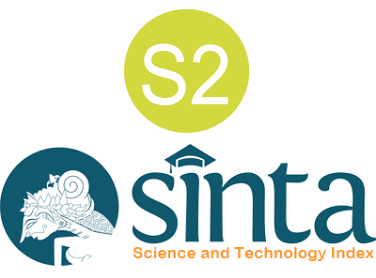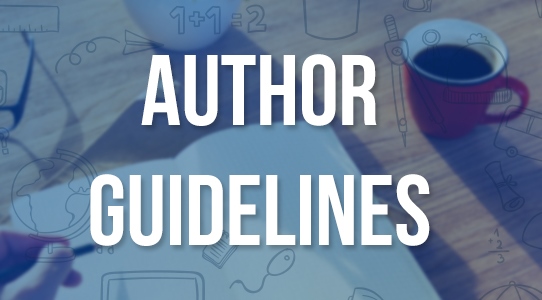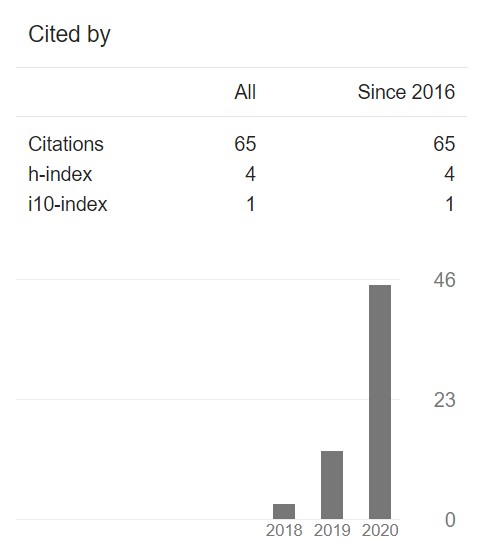IMTA-Based Arabic Language Learning Curriculum at LKBA At-Tasniim Yogyakarta
DOI:
https://doi.org/10.37680/qalamuna.v17i1.6493Keywords:
Arabic learning; IMTA’; LKBA At-Tasniim YogyakartaAbstract
This study aims to analyze the Arabic language learning curriculum at the Foreign Language Course Institute (LKBA) At-Tasniim Yogyakarta with the perspective of IMTA' (al-Iţār al-Marji'ī' li Ta'līm al-Lugah al-'Arabiyyah). This research is qualitative with a literature approach. The research data is in the form of an Arabic language learning curriculum applied at the research site with the source of curriculum document data at LKBA At-Tasniim Yogyakarta. The data collection technique uses documentation. Meanwhile, data analysis uses content analysis. The study's results stated that the Arabic language learning curriculum at LKBA At-Tasniim Yogyakarta showed conformity with the level of IMTA's competency standards. This is marked by the goal of student competence at levels 1 to 3 at LKBA At-Tasniim Yogyakarta, which intersects with level 2 of IMTA'. The Arabic language learning curriculum at LKBA At-Tasniim Yogyakarta is designed to pay attention to gradually developing students' language skills from level 1 to level 3. In this case, there is a significant influence and slice with the level 2 IMTA level.
Downloads
References
Abdullah, M. R., Yaakob, M. A., Zulkifli, M. F., & Sahrir, M. S. (2023). A Review Of Studies Related To Arabic Language Learning Based On The Common European Framework Of Reference For Language (CEFR). In Ijaz Arabi Journal of Arabic Learning (Vol. 6, Issue 2). Maulana Malik Ibrahim State Islamic University. https://doi.org/10.18860/ijazarabi.v6i2.20386
AFMLTA. (2005). Professional Standards for Accomplished Teaching of Languages and Cultures. Australian Federation of Modern Language Teachers Associations.
Ahmed, N., Saha, A. K., Al Noman, Md. A., Jim, J. R., Mridha, M. F., & Kabir, M. M. (2024). Deep Learning-Based Natural Language Processing in Human-Agent Interaction: Applications, Advancements, and Challenges. Natural Language Processing Journal, 9, 100112. https://doi.org/10.1016/j.nlp.2024.100112
Ainin, M. (2018). Metodologi Penelitian Bahasa Arab. Bintang Sejahtera.
Almelhes, S. A., & Alsaiari, H. E. (2024). A Conceptual Framework for Teaching Arabic as a Second Language. Theory and Practice in Language Studies, 14(7), 2110–2118. https://doi.org/10.17507/tpls.1407.18
Amrina, A., Zulmuqim, Z., Iswantir, I., Adam mudinillah, & Noor, A. F. M. (2022). The Implementation of Multicultural Values in Arabic Learning. Izdihar : Journal of Arabic Language Teaching, Linguistics, and Literature, 5(3), 237–250. https://doi.org/10.22219/jiz.v5i3.21914
Anderson, J. (2022). 8 Visual Art in Arabic Foreign and Heritage Language and- Culture Learning: Expanding the Scope for Meaning-Making. In Liberating Language Education (pp. 165–185). Multilingual Matters. https://doi.org/10.21832/9781788927956-012
Andika, M. A. (2017). Pembelajaran Bahasa Arab-Inggris di Lembaga Kursus Bahasa Asing (LKBA) Pondok Pesantren Miftakhul Huda.
Arrobiah, U. F., Putra, W. H., & Salma, K. N. (2022). Program Tasyji’ al-Lugah dalam Pembelajaran Bahasa Arab dan Inggris di SDMT Ponorogo. In Al-Lahjah: Jurnal Pendidikan, Bahasa Arab, dan Kajian Linguistik Arab (Vol. 5, Issue 2, pp. 48–54). Universitas KH. A. Wahab Hasbullah. https://doi.org/10.32764/allahjah.v5i2.3224
Astuti, T. P., Ahmadi, A., Suprayitno, K., & Sutarman, S. (2023). Promoting Arabic Language Proficiency in Islamic Educational Institutions: A Design Framework. At-Tajdid: Jurnal Ilmu Tarbiyah, 12(2), 125–136.
Ben-Naouar, Y. (2021). Al-Ta’āysy al-Ṡaqāfī wa al-Ḥaḍārī bi al-Magrib. Aphorisme: Journal of Arabic Language, Literature, and Education, 3(1), 1–12. https://doi.org/10.37680/aphorisme.v3i1.627
Blench, R. (2021). Relating Linguistic Reconstructions of Plant Names in Berber to the Archaeobotany of North Africa. Journal of Archaeological Science: Reports, 38, 103009. https://doi.org/10.1016/j.jasrep.2021.103009
Gardner, H. E. (2000). Intelligence Reframed: Multiple Intelligences for the 21st Century. Basic Books.
Hossain, K. I. (2024). Literature Based Language Learning: Challenges, and Opportunities for English Learners. Ampersand, 13, 100201. https://doi.org/10.1016/j.amper.2024.100201
Khaldi, B. (2020). Arabic Culture As A Defensive Strategy: Tunisian Education As An Example. In Ijaz Arabi Journal of Arabic Learning (Vol. 4, Issue 1). Maulana Malik Ibrahim State Islamic University. https://doi.org/10.18860/ijazarabi.v4i1.10220
Khodeir, M. S., Mohamed, S. M., & Abdel-Fattah Hegazi, M. (2024). Language Profile Among Arabic Speaking Children with Attention Deficit Hyperactive Disorder. International Journal of Pediatric Otorhinolaryngology, 184, 112080. https://doi.org/10.1016/j.ijporl.2024.112080
Köder, F., Rummelhoff, C., & Garraffa, M. (2024). Learning and Using Multiple Languages: Experiences of Adults with ADHD. Ampersand, 13, 100191. https://doi.org/10.1016/j.amper.2024.100191
Koglbauer, R. (2022). Ofsted’s Curriculum research review for languages—What does this mean for language teachers, department leaders, curriculum design, and professional development? In The Language Learning Journal (Vol. 50, Issue 2, pp. 262–267). Informa UK Limited. https://doi.org/10.1080/09571736.2022.2045681
Komppa, J., Eronen, K., & Korpela, E. (2024). Work Community Support in Professional Language Learning Among Culturally and Linguistically Diverse. Language and Health, 2(2), 100033. https://doi.org/10.1016/j.laheal.2024.10.003
Lusiana, R. (2024). Pentingnya Mengukur Kelayakan Kurikulum Pembelajaran Bahasa Arab di LKBA At-Tasniim Yogyakarta dengan Perspektif IMTA’.
Matsui, M. (2023). The Australian Federation of Modern Language Teachers Associations (AFMLTA). AFMLTA. https://afmlta.asn.au/
Mitrajati, K. (2020). Desain Kurikulum Bahasa Arab LKBA At-Tasniim Yogyakarta (1st ed.). At-Tasniim Press.
Mitrajati, K. (2023). Lembaga Kursus Bahasa Asing At-Tasniim Yogyakarta.
Mohamed, S. (2021). Developing an Arabic curriculum framework based on a compilation of salient features from CEFR-level descriptors. In The Language Learning Journal (Vol. 51, Issue 1, pp. 33–47). Informa UK Limited. https://doi.org/10.1080/09571736.2021.1923781
Morgan, A.-M., Absalom, M., & Scrimgeour, A. (2014). Addressing Language Teacher Professional Learning Needs: An evaluation of the AFMLTA National Conference, Canberra 2013. Babel, 49(2), 36–47.
Niqie, M. S. R., & Ahid, N. (2023). Desain Kurikulum Pembelajaran Bahasa Arab Kontemporer. Indonesian Journal of Humanities and Social Sciences, 4(1), 37–58. https://doi.org/10.33367/ijhass.v4i1.3939
Nurdianto, T., Hidayat, Y., & Wulandari, V. A. (2021). CEFR-Based Arabic Language Learning Competency. In Izdihar: Journal of Arabic Language Teaching, Linguistics, and Literature (Vol. 3, Issue 3, pp. 229–248). Universitas Muhammadiyah Malang. https://doi.org/10.22219/jiz.v3i3.14123
Omari, F. M. A. (2015). Teaching Syntax for Non-Arabic Speakers. Procedia - Social and Behavioral Sciences, 185, 388–391. https://doi.org/10.1016/j.sbspro.2015.03.436
Qurani, A. S., Solihati, S., Al Fudiah, N., Mufarokah, S., Istiadah, I., & Firdaus, R. (2023). Pembelajaran Bahasa Arab di UIN Maulana Malik Ibrahim dan STIBA Ar-Raayah. Kalamuna: Jurnal Pendidikan Bahasa Arab Dan Kebahasaaraban, 4(1), 41–57. https://doi.org/10.52593/klm.04.1.03
Raudatussaadah, Nurwinda Aulia Nasution, Khafsah Situmorang, & Riska Alfani. (2023). Pendidikan Luar Sekolah dalam Konteks Pendidikan Islam. Journal of Management and Social Sciences, 1(1), 52–64. https://doi.org/10.59031/jmsc.v1i1.63
Rayyan, M., Jarrah, M., & Abusalim, N. (2020). Narrow-Syntax and Post-Spellout Movements: Evidence from the Syntax of Idiomatic Expressions in Arabic Varieties. Heliyon, 6(4), e03658. https://doi.org/10.1016/j.heliyon.2020.e03658
Rizki, D. M., & Rosnaeni. (2022). Applying the CEFR Concept in Arabic Language Learning in Madrasah Aliyah eL-Bas (Bina Anak Sholeh Institute) Ciamis. In ATHLA : Journal of Arabic Teaching, Linguistics and Literature (Vol. 3, Issue 2, pp. 133–146). IAIN Surakarta. https://doi.org/10.22515/athla.v3i2.5650
Scrimgeour, A., & Morgan, A.-M. (2018). Professional Learning for Languages Educators: Relating Contemporary Professional Learning Foci to Teachers’ Evaluations of the 21st AFMLTA International Languages Conference 2017. Babel, 52(2), 46–52.
Syakur, A. (2023). Al-Iţār al-Marji’ī’ li Ta’līm al-Lugah al-‘Arabiyyah. al-Markaz al-Tarbawī li al-Lugah al-’Arabiyyah li Daul l-Khālij.
Syuhadak, S., Hilmi, D., & Rosyidah, I. (2021). Arabic Language Learning with Multicultural Perspective at State Islamic Universities in East Java. In LISANIA: Journal of Arabic Education and Literature (Vol. 5, Issue 2, pp. 129–143). IAIN Salatiga. https://doi.org/10.18326/lisania.v5i2.129-143
Tashakkori, A., Teddlie, C., & Teddlie, C. B. (1998). Mixed Methodology: Combining Qualitative and Quantitative Approaches (Vol. 46). SAGE Publications.
Utami, R. L. (2020). Desain Kurikulum Bahasa Arab di Indonesia. In EL-IBTIKAR: Jurnal Pendidikan Bahasa Arab (Vol. 9, Issue 1, p. 108). IAIN Syekh Nurjati Cirebon. https://doi.org/10.24235/ibtikar.v9i1.6235
Wang, Y., & Yang, H. (2023). Language Learning Motivations among Turkish Learners of Chinese as a Foreign Language: A Survey of Five Universities in Turkey. In Behavioral Sciences (Vol. 13, Issue 10, p. 808). MDPI AG. https://doi.org/10.3390/bs13100808
Yuliyanti, S., & Fauji, I. (2023). Interactive Arabic Language Learning: Enhancing Al-Arabiyah Baina Yadaik through Articulate Storyline. In Indonesian Journal of Islamic Studies (Vol. 12, Issue 1). Universitas Muhammadiyah Sidoarjo. https://doi.org/10.21070/ijis.v12i1.1683
Downloads
Published
How to Cite
Issue
Section
License
Authors who submit manuscript retain its copyright and grant publisher right of first publication licensed under a Creative Commons Attribution-ShareAlike 4.0 International License (CC BY-SA 4.0) that allows others to access (search, read, download, and cite), share (copy and redistribute the material in any medium or format) and adapt (remix, transform, and build upon any material) the work for any lawful purpose, even commercially with an acknowledgement of the work's authorship and initial publication in Qalamuna: Jurnal Pendidikan, Sosial, dan Agama.












